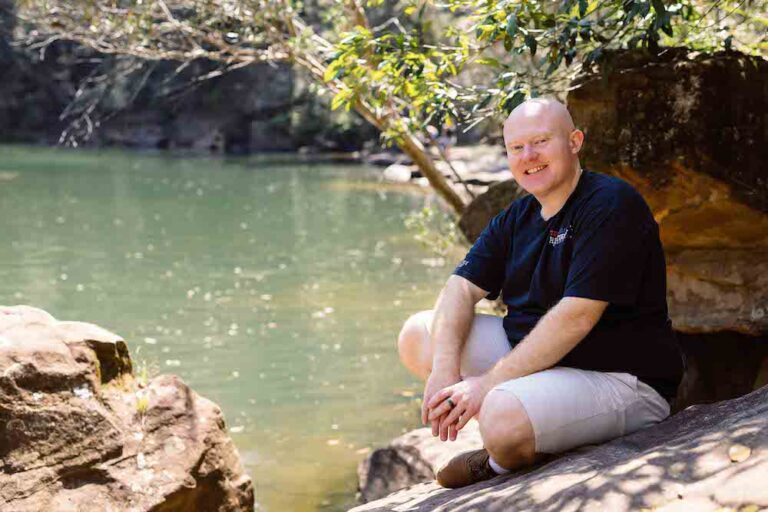Around this time of year, people start reflecting on the year that was and making plans for the coming year. Many articles start appearing in popular magazines about turning over a new leaf. But what does the science of behaviour tell us about what works and what does not when it comes to changing longstanding patterns and habits? A new book, Making Habits, Breaking Habits by Jeremy Dean (Da Capo Lifelong Books), pulls the research together and points out useful strategies.
New Year, New You?
It probably wouldn’t surprise you to learn that the majority of people who make New Year’s resolutions fail to keep them.
One study, published in the Journal of Clinical Psychology in 2012, showed that after six months only 40 per cent of people were still sticking to their resolutions. This points to the ineffectiveness of resolutions to do what we want them to. Our expectations are out of step with what is actually possible.
One example is the length of time it takes to form a habit. The chances are that you have heard it takes 21 days. Actually, recent studies show it takes much longer.
A study from the University College London in 2010 found that on average it took 66 days until a habit was formed. It depended on what the habit was as to how long it took to become fully automatic. People who resolved to drink a glass of water after breakfast took approximately 20 days, while those trying to eat a piece of fruit with lunch took at least twice as long to turn it into a habit. These are straightforward habits to change, compared to most of our more complex behaviours, eg starting or changing an exercise routine.
According to Dean, habits have a number of important characteristics which are useful to remember in order to make best use of them.
Firstly they are performed on “automatic pilot”. Our habits often serve us well, because we can think about other things while performing them. For example, for most people having a shower, hanging out washing and greeting another person are all done in automatic mode.
These activities don’t require us to think about them and thus don’t require “cognitive load”. Making decisions is mentally tiring for us and depletes our willpower so it’s important to have parts of the day that we can do with little effort. Research shows that up to 50 per cent of the time we are awake, we are performing a habit.
Performing a habit is usually devoid of emotion. Through repetition, activities that once evoked emotion no longer do; this is why routinely getting up early to go to work is just something we do. In studies investigating habits, participants felt more in control and less stressed while performing habits than they did in acting non-habitual behaviours.
Context is crucial for habits to operate. We tend to do the same things in the same circumstances. This is why it’s difficult to do simple things when you have moved house (where is the cutlery drawer?) or your morning exercise routine is interrupted when you have a baby. You have to think consciously about activities that were previously done without thinking.
When habits are strong, they override our intentions. Only when habits are weak does intention predict behaviour. If you always sleep in past the alarm in the morning and just get to work on time, just making the intention to get up earlier is likely to be ineffective without making further plans.
How we change habits
When anyone wants to change any type of behaviour, a good question to ask is why they want to change it. What benefit will the new behaviour bring? Research is clear that without a strong reason to change, new habits are much harder to form.
Because habits are done on automatic pilot and are not conscious acts, they are hard to change. If you can remind yourself of this fact, it may help to explain previous unsuccessful attempts at habit change and help you be more compassionate towards yourself. Interestingly, and perhaps counterintuitively, treating yourself with compassion rather than with a strict military approach (think bootcamp) increases the chances of behaviour change. One way of facilitating change is to adjust your environment.
We make hundreds of decisions a day, around 200 about food alone. By the time you arrive home each day, tired from the day’s work, your willpower depleted (especially if you’ve had a stressful day), it’s likely your habits will take over.
If you have thought about your environment beforehand, anticipating what you’ll be tempted by, you can adjust what you have around the kitchen eg a fruit bowl instead of chocolate and chips immediately accessible.
Healthy habits are strongly cued by the environment and even changing plate sizes can determine the amount you eat.
Staying mindful
Whatever changes you make to your own environment there will always be parts that you can’t change. The vending machine at work will still be stocked up with unhealthy snacks. Practising mindfulness can be helpful in noticing temptations and allowing them to pass without taking any action.
Closely related to being mindful of temptations, becoming more aware of our habits (when and where we perform them) is a starting point in changing them.
In studies of changing behaviour, participants who acted mindfully without judgement, just noticing their habits, were able to line their behaviour up with their intentions.
These studies investigated how to increase your amount of exercise and how to decrease binge drinking. A client I worked with on binge eating once remarked, “It is essential to be unmindful to binge”.
It is tempting with behaviour change to follow the lead of reality television programmes and try to give ourselves total makeovers. This approach will almost guarantee failure. Research is clear that new habits typically work by changing one small thing at a time, seeing what happens and then modifying things as you figure out what works for you. Psychological researchers have also looked at the techniques for creating long-lasting changes.
Techniques to try
One is known as the contrast technique. To do this, imagine your habit as you want it to be (the positive change), then think about the negative aspects of the current reality. Then compare the two to decide if your goal is actually achievable.
If your expectations of success are high, you will tend to commit to the goal and make the necessary changes to plan for success. If your expectations of success are low, the chances are you will let go of that goal and try for something else.
Get specific. Instead of saying to ourselves, “this year I will get fit”, research tells us that if we can specify the exact behaviour and the exact situation where we will perform it, we are far more likely to do it. A statement like, “If I finish work before 5.30pm, then I will go to the pilates class at 5.45pm” leaves no doubt as to what the options are.
This links a particular situation with the response, an action, and is known as an implementation intention. As stated in Making Habits, Breaking Habits, the “‘if, then’ link is like an embryonic habit; it’s the blueprint for the habit to come.”
Implementation intentions have been shown to work in multiple studies. Rather than setting times for implementation intentions, it’s better to link events that can’t be missed – things that happen regularly like arriving at work.
Our daily routines are made up of activities that we follow in a sequence. For example, get up, have a shower, get dressed, have breakfast, make coffee, clean teeth etc. Psychologists call these chains of behaviour. A lot of your day will be habits linked together in chains. If you are looking to change or add a new behaviour, consider adding it to the chain after a regular activity.
Like taking up a weight loss programme, new habits are relatively easy to start but can get progressively harder as time goes on and dissatisfaction sets in, or as more and more obstacles come up.
For example, if you are losing weight on a weight loss programme, satisfaction will be high and you will continue with the programme. If progress is slow or plateaus or you end up gaining weight, you’ll probably give up.
It is at this point that you’ll need support – from a friend, buddy from the same programme, a coach, therapist or you can be your own coach. You’ll need to observe your behaviour as if you were a curious scientist recording data. You need to notice any obstacles, distractions and temptations and make plans on how to deal with them. One way of doing this is using the implementation intention described above.
Our minds always come up with reasons why we can’t do something, so you’ll need to adapt the following statement to your mind’s favourite way of sabotaging you. For example, “If my mind says ‘I can’t be bothered eating well because I’m not losing weight’, then I will remind myself that good habits take time and I am building a healthy lifestyle.”
With these suggestions on board, habit change might become easier.







